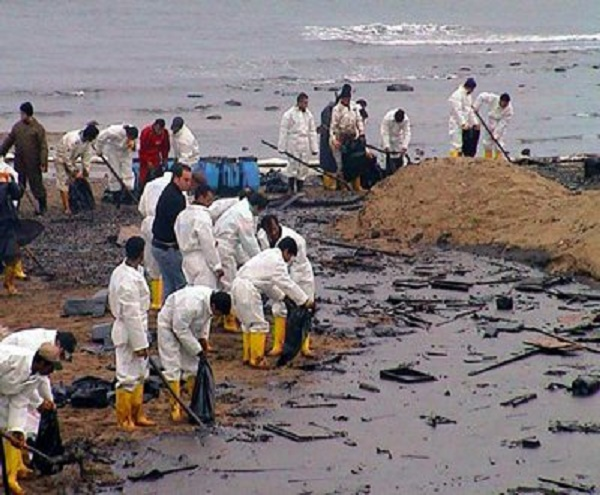International oil companies have so far contributed about one billion dollars for the implementation of Ogoni clean-up project.
The Minister of Environment, Dr Mohammad Abubakar, made this known during a news briefing organised by the Ministry in Abuja on clean-up of Ogoniland.
According to Abubakar, the remediation of 21 lots of phase one batch has been cleaned while 17 lots were completed by Hydrocarbon Pollution Remediation Project (HYPREP)
He said that 10 out of the 17 lots were closed-out by National Oil Spill Detection Agency (NOSDRA), adding that the certification sampling of three lots for close-out was completed.
Abubakar said: “While the other three are awaiting certification sampling for close-out by NOSDRA, the remaining five, which are yet to be completed by HYPREP, are at various stages of completion.
“Also, 36 remediation contracts comprising two project activities, namely soil remediation works, 29 lots, and tier two assessments of groundwater works, seven lots, were awarded in February 2020.
“However, due to the global Coronavirus pandemic in the first and second quarters of 2020, activities preceding mobilisation of these contractors to site were slowed down.
Read Also: We must end insecurity in Nigeria – Buhari tells NASS members
“As at today, nine remediation lots have been completed and are awaiting for NOSDRA certification and seven other contracts for detailed quantitative environmental risk assessment to determine ground water conditions in some selected sites were completed.”
The minister said that the Federal Government inaugurated the construction of six water schemes in March 22 at Bori, Khana Local Government Area (LGA) of Rivers.
He said that the sites were Bori/Kpea Water Scheme in Khana Local Government Area Barako/Bori-Dere/Kpea Dere water scheme in Gokana LGA.
“He gave others as Terabo water scheme in Gokana LG Area, Korokoro/Nonwa water scheme in Tai LGA, Alesa water scheme in Eleme LGA and Ebubu/Nsisioken/Ogale water scheme.
He said that rehabilitation and construction works had started in all the sites.
Abubakar said that about 882 youths in the communities were engaged by batch one remediation contractors while additional 1,118 youths were also engaged by batch two remediation contractors.
“Therefore, as at today, a total of 2,000 temporal jobs were created in the course of remediation.
“The job was across the four LGAs of Ogoniland, besides the numerous indirect jobs that are to be created in the form of trading and support activities,” he said.
Abubakar said that International Institute of Tropical Agriculture (IITA) and the stakeholders Democracy Network (SDN) trained 15 youths from the four LGAs of Ogoniland.
He said that at the end of the three months intensive training, the trainees fabricated machines used to set up a cassava processing facility at Korokoro, Tai LGA.
Abubakar said that strategy for the restoration and management of degraded mangrove vegetation involved planning, decision making and implementation of the restoration programme.
The minister said that the programme was based on Shoreline Assessment Technique (SCAT) outcome, adding that the SCAT would provide information and data on the extent and depth of contamination.
He said that the SCAT would offer guidance on the most suitable technique for the clean-up of the impacted shoreline to ensure the reduction of `environment harm.
He said that the selected technique would ensure environmental benefit for both flora and fauna were achieved.
“The proposed size for the SCAT is 1,000 hectares along the shorelines of creeks and rivers and is categorised into three phases.
“Phase one covers 300 hectares upstream while phase two covers 300 hectares mid-stream and Phase three covers 400 hectares down-stream.
“Each of the phase is achievable within six months of field work. The SCAT process will be undertaken by a team of professionals drawn from the critical stakeholders,” he added.(NAN)

